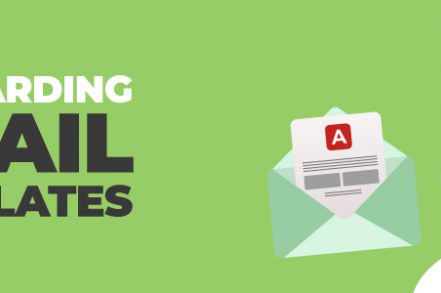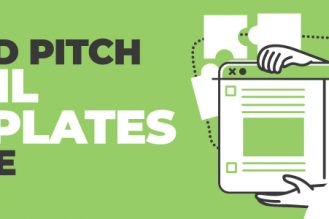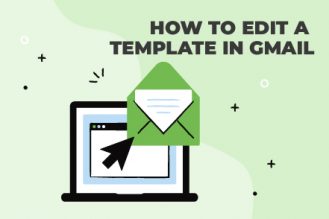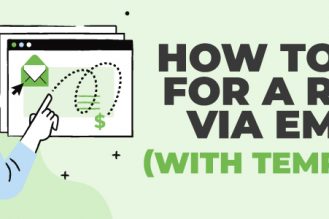It’s easy to overlook the importance of a strong welcome email. After all, if a customer signs up they’ll just jump in and start using your product, right?
Not necessarily.
Your welcome email is your chance to steer your new user in the right direction and give them the information they need to get the most out of your product.
If you blow it, things like higher customer churn, dissatisfied customers and more resources put towards support can be the result of poor customer onboarding.
But hey, it’s not all gloom and doom, right? You’ll be OK if you write messages that actively engage new customers, and get them to act now.
In this guide, we’ll break down 10 onboarding email templates to better engage your customers right from the start.
Below are ten onboarding emails that are fair game for you and your SaaS company. Be sure to tweak and adapt these according to your brand voice and product.
Also, you might consider swapping out or duplicating these templates based on how long your onboarding series is (think: a week versus 10 days or two weeks).
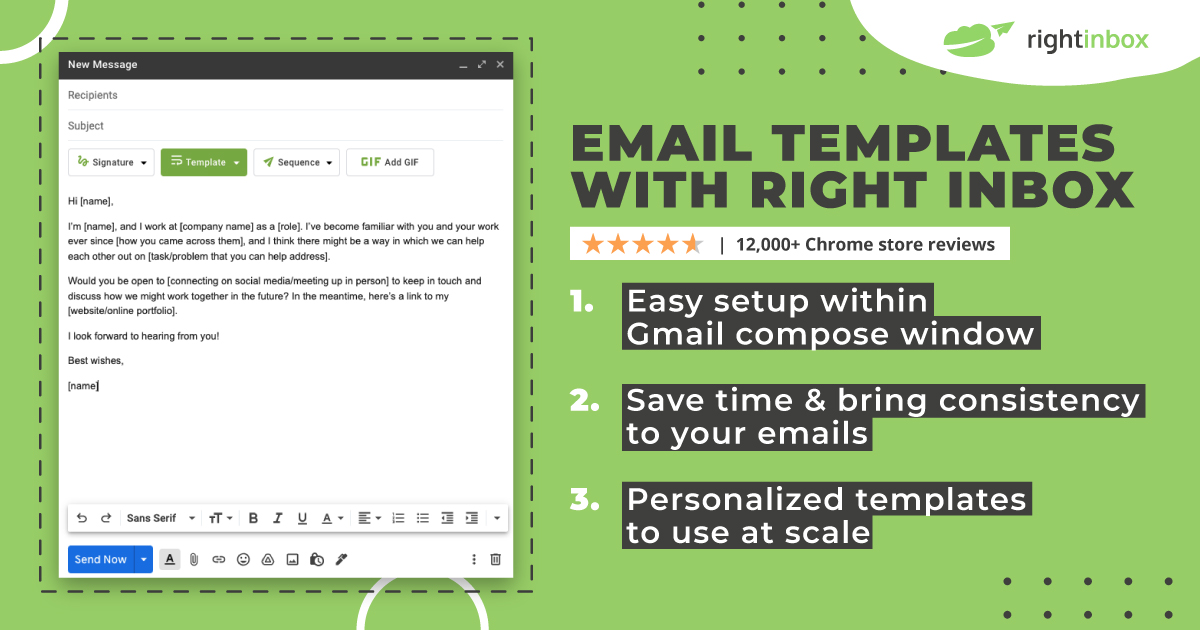
Try Right Inbox email templates – Install for FREE
1. The Welcome Email (option #1)
Your onboarding welcome emails are arguably the most important in your series.
After all, you’re tasked with making a meaningful first impression on your new sign-ups. You obviously want to hook them here and score that ever-so-important initial login.
Your end-game? Get your product in their hands ASAP.
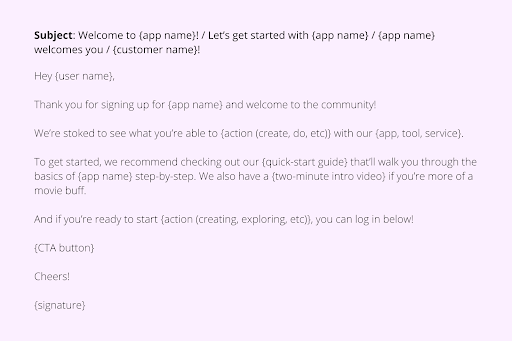
2. The Welcome Email (option #2)
When you sign up for a new product, the first email you get tends to be loaded with links — create your password, upload a photo, connect an integration, tell a friend, etc.
When you tell people to do all of these things, don’t be surprised when they don’t do them.
That’s why I’ve given you a second option to your welcome email.
The goal here is simply to get people to respond so you can start a conversation and learn more about what brought them to your product.
(PS: this template would translate nicely to any other content welcome email as well.)
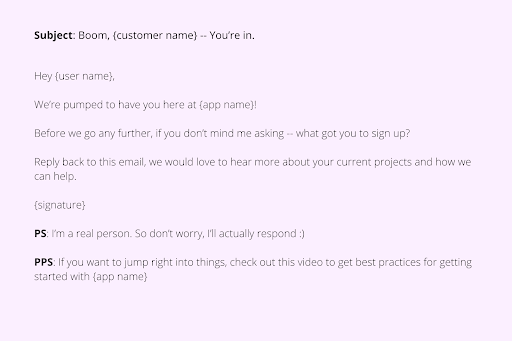
3. The Pro-Tip
Sometimes sign-ups will need a little nudge when getting started with your tool.
Why does this happen? Maybe they’re initially overwhelmed by your UI or need a quick refresher on your product.
Not to mention, there are tons of reasons why someone might have slept on your welcome message (lost among Amazon notifications, deleted by accident, weird time zones, etc).
Your goal here is to highlight basic features and suggested steps to get a taste of what your software is capable of.
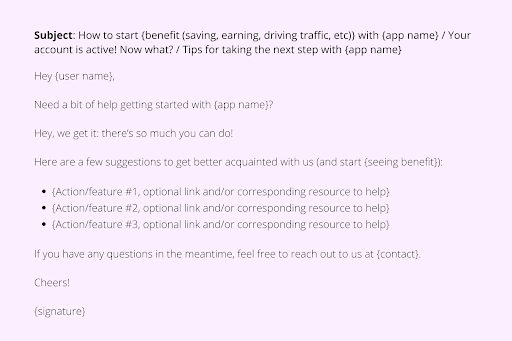
4. The Case Study Suggestion
For B2B buyers, case studies are among the most effective types of content.
Bringing up customers and case studies is a brilliant way to invite your sign-ups to feel like they’re part of a community. Highlighting use cases makes your product seem more actionable.
These types of messages are prime for attention-grabbing subject lines that include striking stats and numbers.
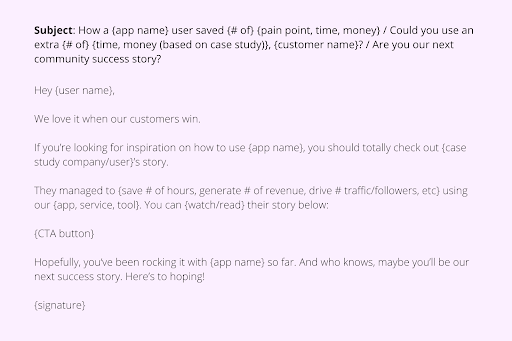
Additional Reading: Gmail Templates Hub – Everything You Need to Know
5. The Most Important Feature
Before you read any further, you must identify that single feature you’d want your new sign-ups to check out right away. Well, what is it?
Whatever it is, it must keep your new sign ups glued to your product versus that of your competitors.
Important features are good to emphasize in onboarding emails, especially if they’re time-sensitive and expire prior to an upgrade. These types of messages are hype-worthy, allowing you to get creative with your subject line(s).
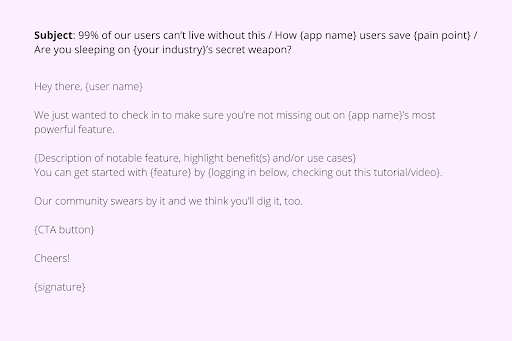
6. The Personal Touch
Not many SaaS company emails are presented on behalf of employees.
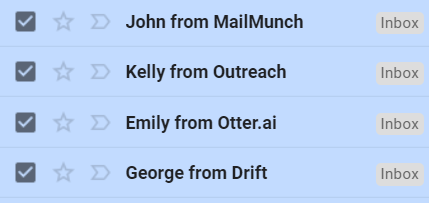
That’s not just a stylistic choice.
According to data from Campaign Monitor, “personal correspondence” (#1) and “content that was made just for me” (#6) are among the top reasons people engage with emails.
People are more likely to interact with you when they know you’re a human being that is interested in them.
There’s a HUGE opportunity to connect with your new sign ups simply by switching your tone and getting personal. Here you can present yourself as a helping hand rather than a company presenting a sales pitch.
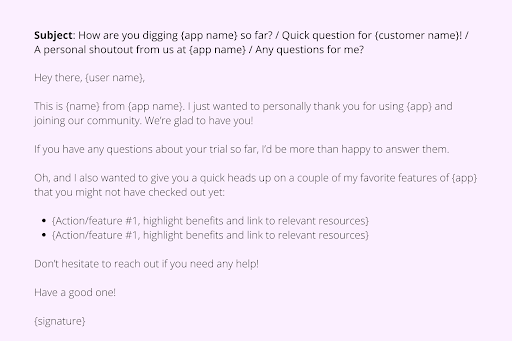
7. The Helping Hand
At this point, you’re trying to make sure that your sign-ups have everything they need to be successful, long-term customers.
This message can be sent on the tail-end of a trial for non-responders or as part of your general onboarding emails as a catch-all for questions.
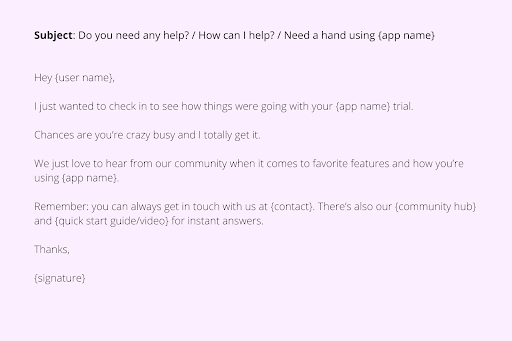
8. The Upcoming Expiration
Tick-tock, tick-tock.
Now’s the time to crank up the sense of urgency and encourage sign-ups to make sure that they understand that your time together is almost up (unless they subscribe).
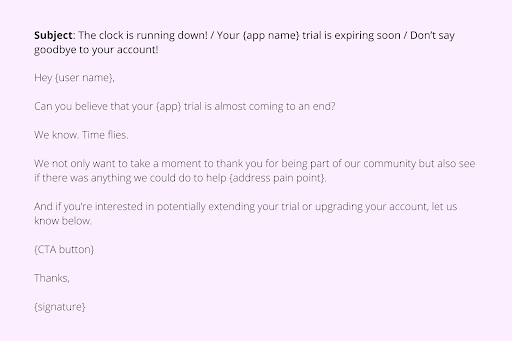
9. The No-Responder
This is your last shot, the Hail Mary pass to win it all. These messages are for folks who dabbled in reading a few of your onboarding emails but never went further than that. Bummer, I know.
The no-responder email gives you the opportunity to thank them for their time and leave the door open to do business together down the road.
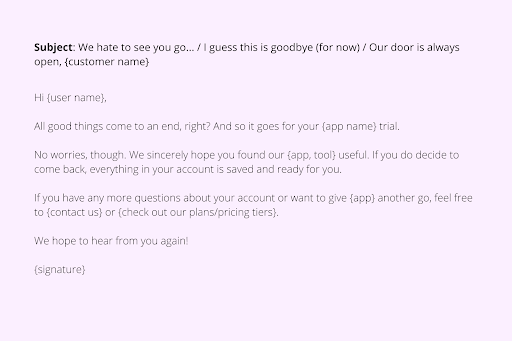
10. The Add-On
Let’s say you’ve won a subscriber (congrats!) and rightfully want to keep the momentum going.
After your new subscriber has given your product a proper spin, consider letting them in on an upgrade or add-on offer.
Doing so early on in their customer lifecycle can ultimately help them see the full scope of your product and its benefits. With this move you’re priming the new customer to become a long-term subscriber.
The key here is to hammer home the benefits of the upgrade rather than get too in the weeds about specific features.
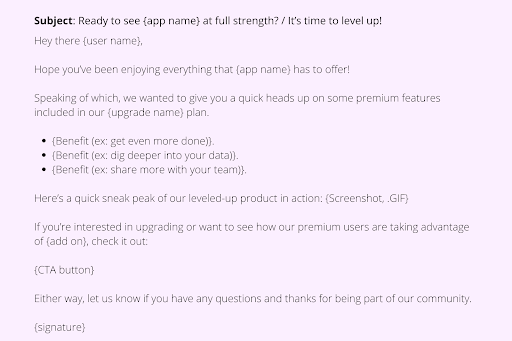
Are your onboarding emails as stellar as you think?
Crafting a positive onboarding experience has a major impact on all factors of your SaaS business, from retention to your company’s overall growth rate; onboarding customers well must not be overlooked.
To do so you must consider multiple key factors for your onboarding email sequences. The templates and tips laid out above are a solid place for any SaaS company to get started.
By writing engaging messages that actually draw readers to take action, you’ll be poised for long-term customers rather than sign-ups that bounce.
Track emails, email reminders & templates in Gmail for free
Upgrade Gmail with the features it’s missing
Add to Gmail